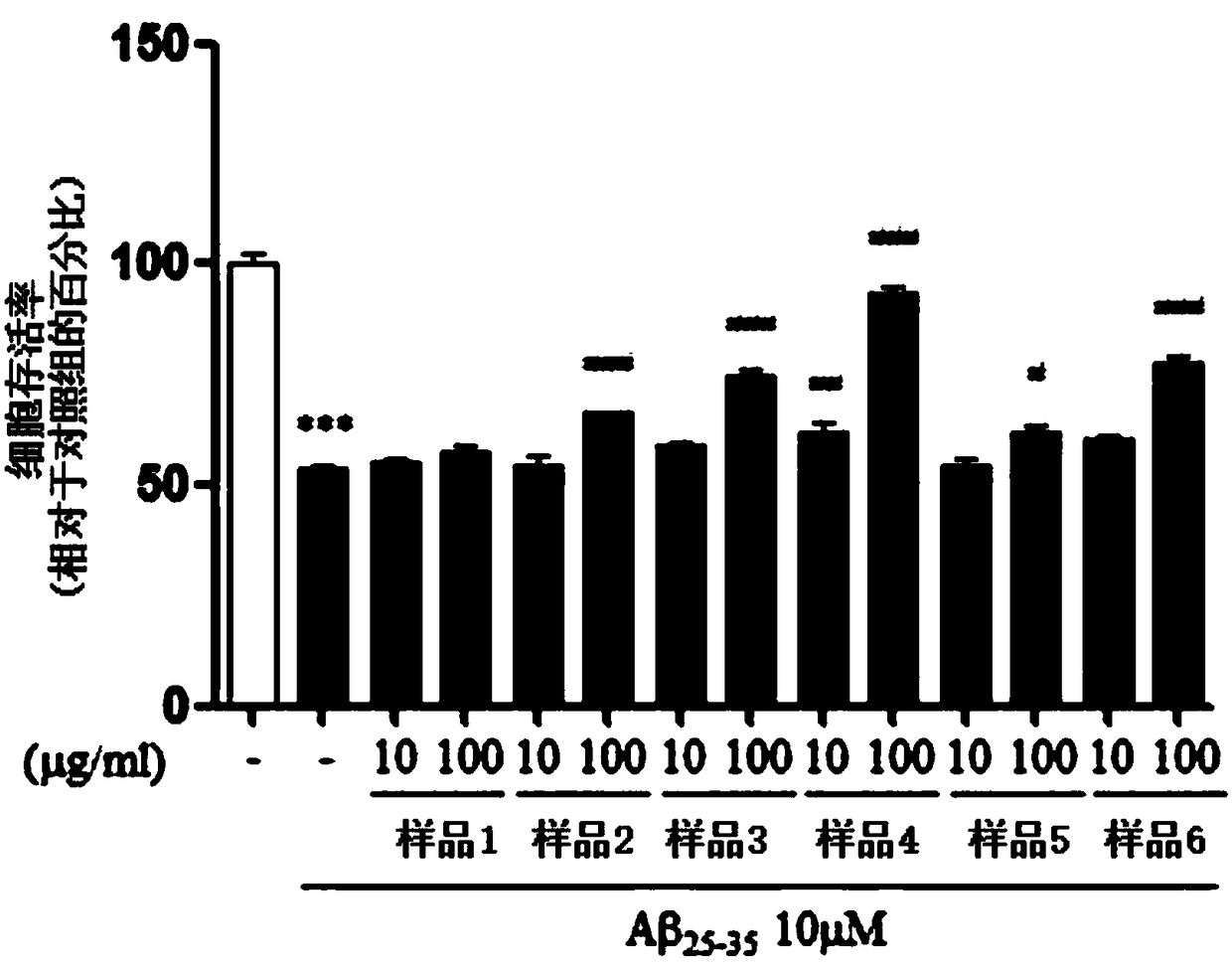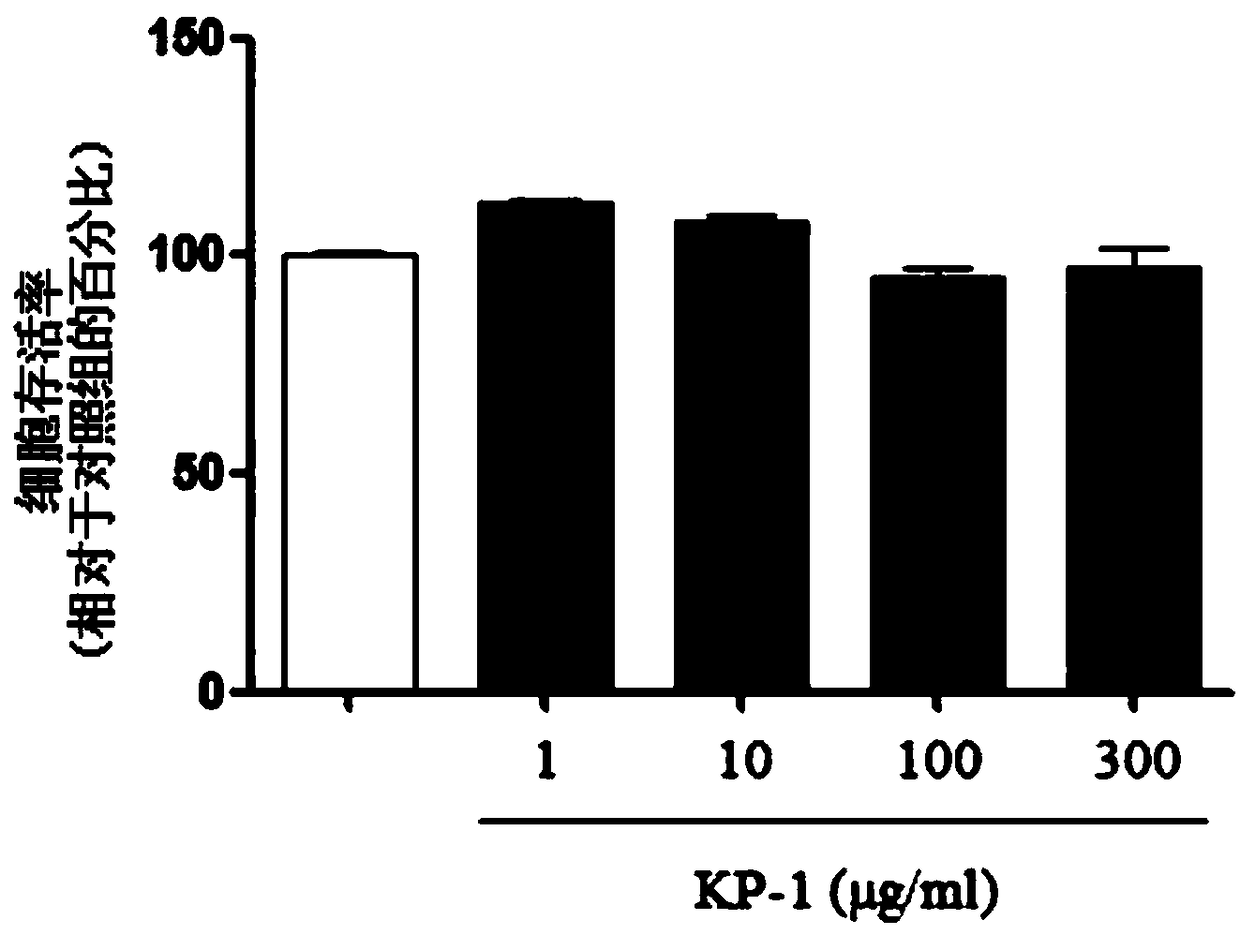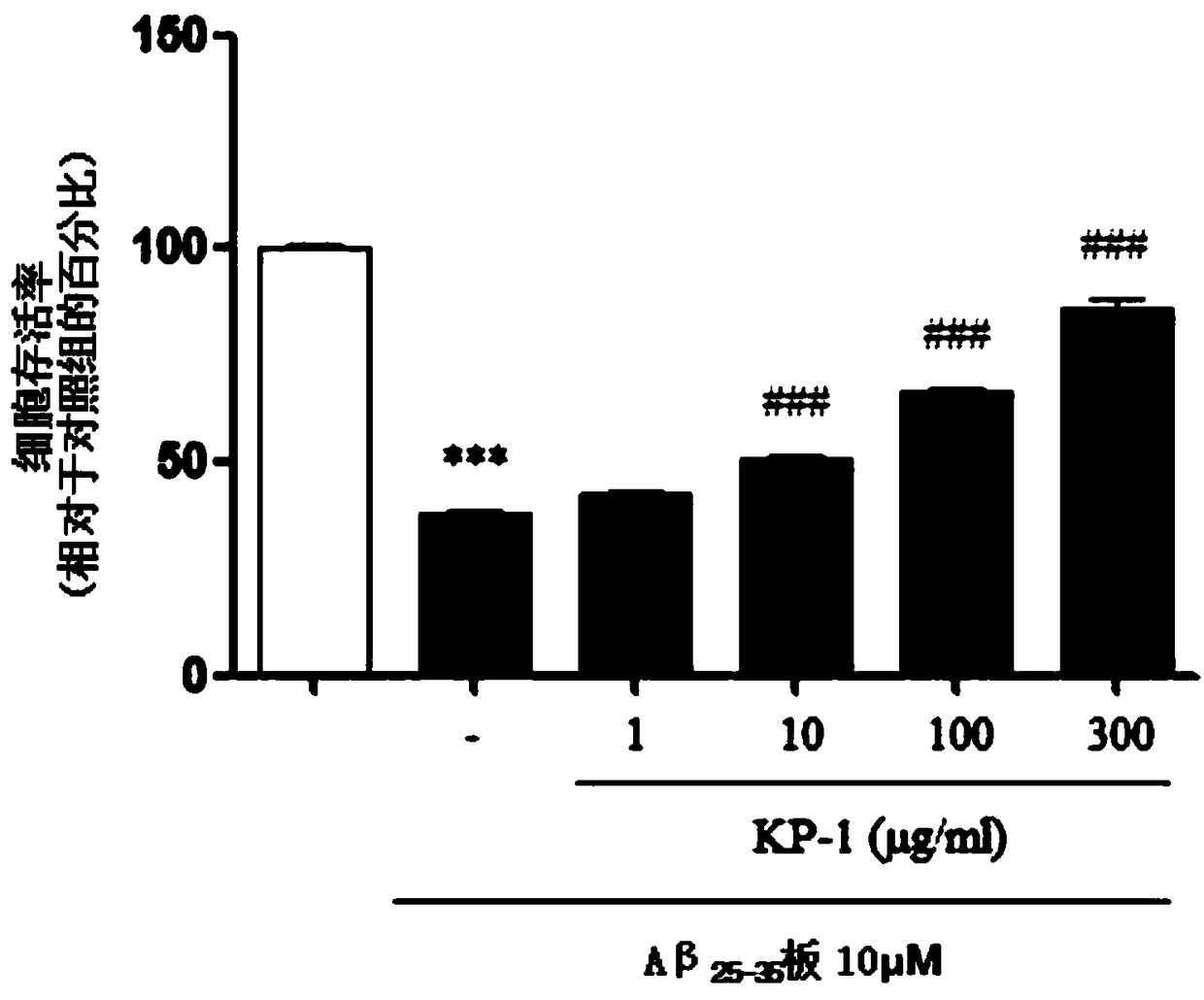Composition for memory improvement comprising petasites japonicus leaf extract
An extract and memory technology, applied in the field of memory-improving compositions, can solve the problems of economic benefit decline, low yield of active ingredients, liver toxicity, etc., and achieve excellent protection and regeneration effects
- Summary
- Abstract
- Description
- Claims
- Application Information
AI Technical Summary
Problems solved by technology
Method used
Image
Examples
Embodiment 1
[0033] Confirmation of preparation, cytotoxicity and nerve cell protection effect of butterbur leaf extract (KP-1)
[0034] After extracting by adding 20 times of water to 1 kg of butterbur leaves, the extract was freeze-dried to obtain 250 g of a freeze-dried product (25% relative to butterbur leaves). Then, 70% ethanol was added to the water-extracted freeze-dried product of butterbur leaves, and eluted at room temperature for 24 hours. After 24 hours, the supernatant that dissolved unnecessary substances was removed, and only the precipitate of butterbur leaf extract was recovered, and 150 g of freeze-dried products were obtained by freeze-drying (relative to water extraction freeze-drying product is 60%). The final yield was 15% with respect to the butterbur leaves used, and 60% with respect to the water-extracted freeze-dried product of the butterbur leaves. As shown in Table 1 below, samples were prepared by the extraction method of butterbur leaves and cytotoxicity an...
Embodiment 2
[0039] Confirmed active ingredients of butterbur leaf extract (KP-1)
[0040] In order to explore the effective components of KP-1, after separating KP-1 into F1-F8 with resin DIAION HP-20, the F4 showing the highest cell survival rate was named KP-1F4 ( Figure 4 ). KP-1F4 was fractionated a second time to f1-f11 with SEPHADEX LH2. As a result, f1 and f2 had no activity in the pre-experiment, and in f9 and f11, a cell viability rate of more than 75% was shown ( Figure 5 ). The effective components of f9 and f11 were purified by liquid chromatography-mass spectrometry (LC-MASS) and nuclear magnetic resonance (NMR). It was confirmed that the components of f9 are the following chemical formulas 1 to 3, and the components of f11 are the following chemical formula 4.
[0041] Chemical formula 1:
[0042] 3,5-Di-O-caffeoylquinic acid
[0043] Chemical formula 2:
[0044] 4,5-Di-O-caffeoylquinic acid
[0045] Chemical formula 3:
[0046] 3,4-Di-O-caffeoylquinic acid ...
Embodiment 3
[0050] The memory-improving effect of butterbur leaf extract was confirmed
[0051] ICR (male, 7-week-old) was acclimatized and bred for one week for use. The breeding environment of this experiment was set at a temperature of 20-24°C, a relative humidity of 50-60%, a ventilation rate of 15 times per hour, and a light and dark lighting time of 12 hours (07:00-19:00). The temperature is 150-200Lux and raised here, so that the ICR can freely ingest solid feed and water for mice. Breeding was carried out in accordance with the Kyung Hee University animal husbandry regulations in compliance with the standards (No. 86-23, revised 1985) proposed by the National Institutes of Health (NIH, USA).
[0052] A passive avoidance test was performed to confirm the memory-improving effect of butterbur leaf extract in an Aβ-induced Alzheimer's type dementia model. The device for administering electric shocks was used in the dark by taking advantage of the light-to-dark habit of mice. The bo...
PUM
 Login to View More
Login to View More Abstract
Description
Claims
Application Information
 Login to View More
Login to View More - R&D
- Intellectual Property
- Life Sciences
- Materials
- Tech Scout
- Unparalleled Data Quality
- Higher Quality Content
- 60% Fewer Hallucinations
Browse by: Latest US Patents, China's latest patents, Technical Efficacy Thesaurus, Application Domain, Technology Topic, Popular Technical Reports.
© 2025 PatSnap. All rights reserved.Legal|Privacy policy|Modern Slavery Act Transparency Statement|Sitemap|About US| Contact US: help@patsnap.com



